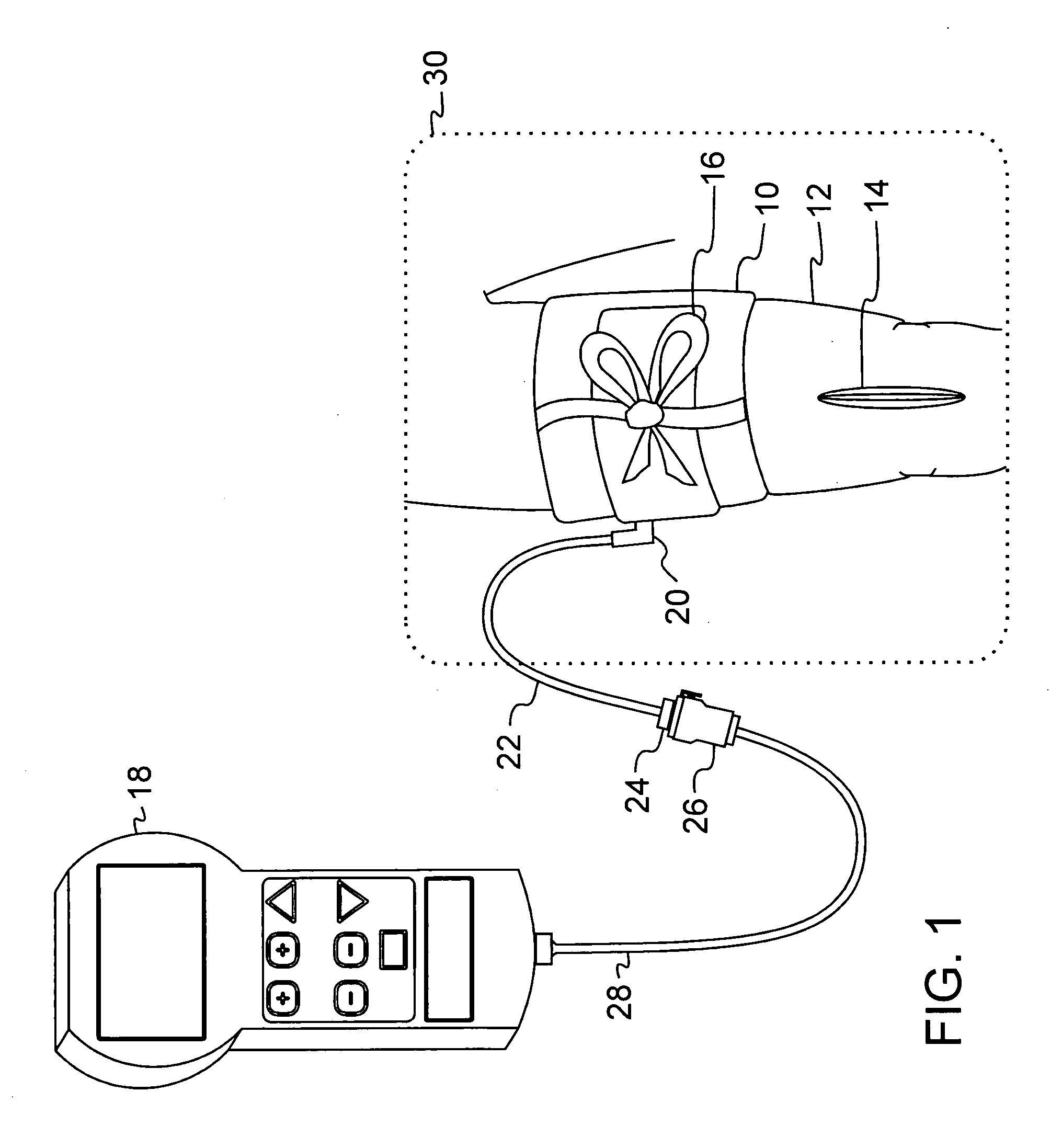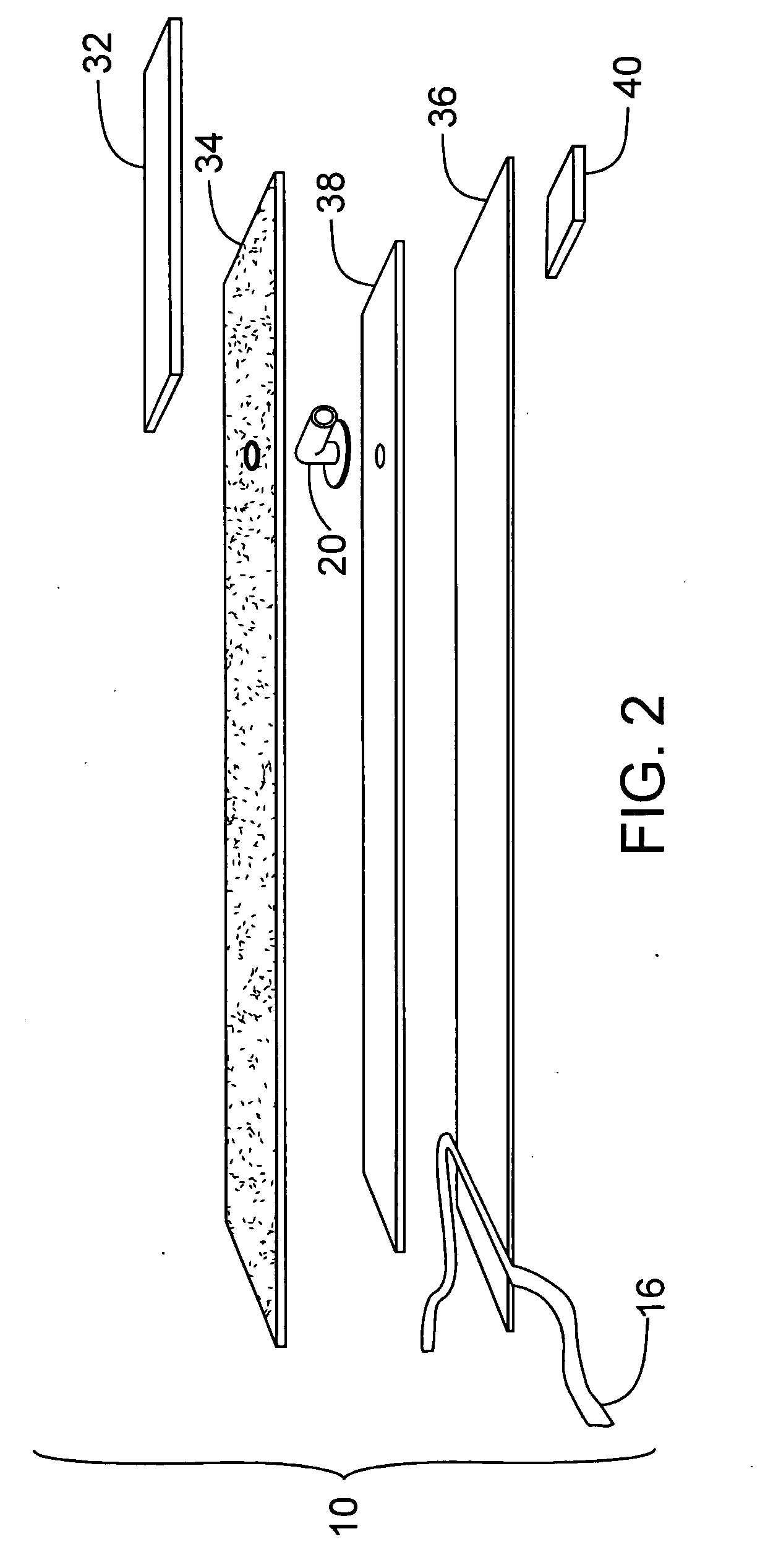Low-cost disposable tourniquet cuff
a tourniquet and low-cost technology, applied in the field of pneumatic tourniquet cuffs, can solve the problems of increased pressure of tourniquets, over-all thickness and stiffness, and difficulty in uniform application of cuffs by surgical users,
- Summary
- Abstract
- Description
- Claims
- Application Information
AI Technical Summary
Problems solved by technology
Method used
Image
Examples
Embodiment Construction
[0024]FIG. 1 is a pictorial representation of the preferred embodiment in a surgical application, showing tourniquet cuff 10 secured circumferentially around patient limb 12 proximal to surgical site 14. Tie strap 16 described further below, is tied as shown in FIG. 1 to help prevent the cuff 10 from sliding proximally or distally on patient limb 12 when cuff 10 is inflated.
[0025] The inflatable portion of tourniquet cuff 10 completely encircles patient limb 12 and is pneumatically connected to tourniquet instrument 18 via cuff port 20, cuff tubing 22, cuff connector 24, instrument connector 26 and instrument tubing 28. Tourniquet instrument 18 supplies pressurized gas for the inflation of cuff 10 and is capable of inflating cuff 10 to a pressure that will occlude the flow of arterial blood in patient limb 12 distal to cuff 10.
[0026] The perimeter of a sterile surgical field 30 encloses surgical site 14, a portion of patient limb 12, tourniquet cuff 10, and a portion of cuff tubin...
PUM
 Login to View More
Login to View More Abstract
Description
Claims
Application Information
 Login to View More
Login to View More - R&D
- Intellectual Property
- Life Sciences
- Materials
- Tech Scout
- Unparalleled Data Quality
- Higher Quality Content
- 60% Fewer Hallucinations
Browse by: Latest US Patents, China's latest patents, Technical Efficacy Thesaurus, Application Domain, Technology Topic, Popular Technical Reports.
© 2025 PatSnap. All rights reserved.Legal|Privacy policy|Modern Slavery Act Transparency Statement|Sitemap|About US| Contact US: help@patsnap.com



